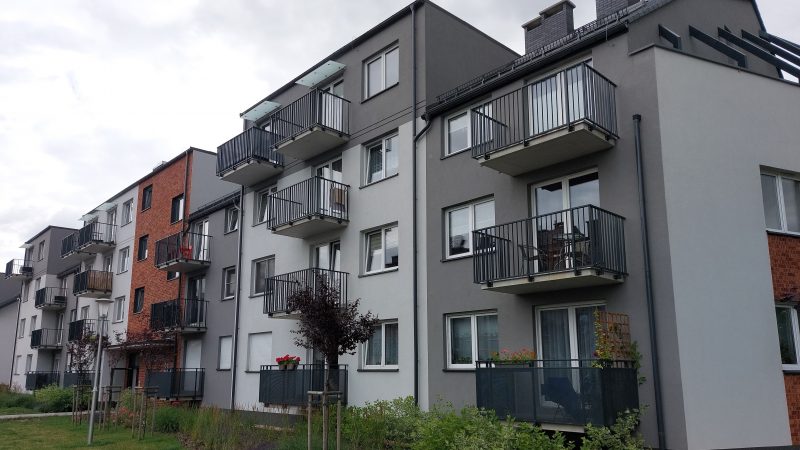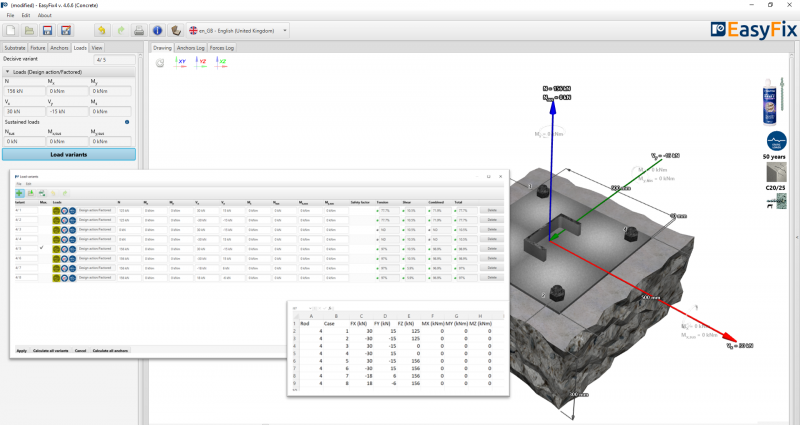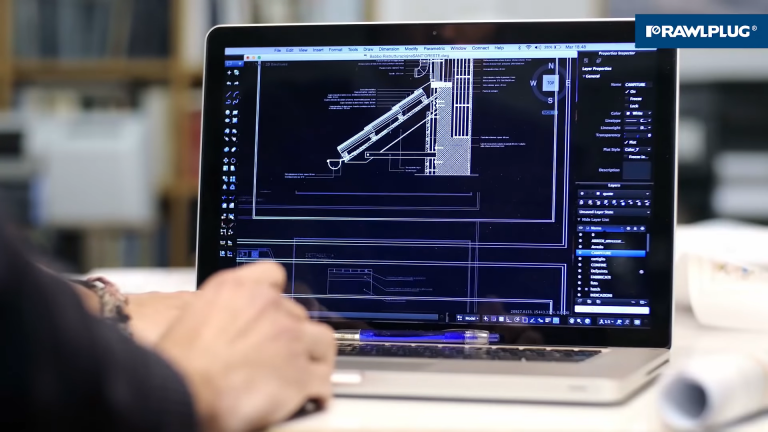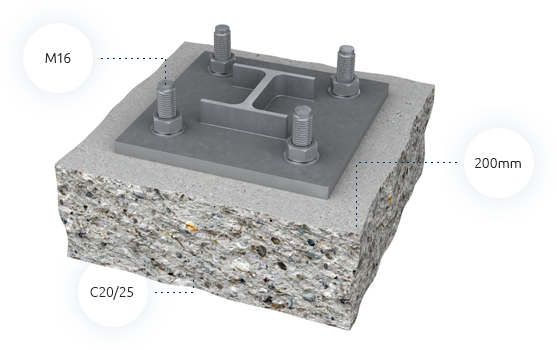Correct load definition is a base requirement of proper fixing designing. The most common cases are related to static/quasi-static loads. According to applicable design guidelines EN 1990 Eurocode – Basis of structural design, they are defined as follow:
- static action – action that does not cause significant acceleration of the structure or structural members;
- quasi-static action – dynamic action represented by an equivalent static action in a static model.
In case of quasi-static actions, such way allows to take into account dynamic effects by appropriate dynamic coefficients e.g. for wind load or for traffic.According to mentioned guideline, actions can be divided i.a. due to time-variant:
- permanent actions (G), e.g. self-weight of structures, fixed equipment and road surfacing, and indirect actions caused by shrinkage and uneven settlements;
- variable actions (Q), e.g. imposed loads on building floors, beams and roofs, wind actions or snow loads;
- accidental actions (A), e.g. explosions, or impact from vehicles.

Figure 1. Fixing example – balcony balustrade. Balustarde dead weight – premanent veritcal load. Handrail load – variable horizontal load, with variable direction additionaly.
Final load values Fd (design loads) should be determined by characteristic loads Fk in consideration of appropriate partial safety factors γi (see Equation 1). The factors get different values depend on type of the actions (permanent, variable, accidental). They can be defined local as well, then values are presented in National Annex to Eurocode.
Fd = Fk · γf (1)
Fd – design value of an action F
Fk – characteristic value of an action F
γf – partial factor for an action F
EasyFix software allows to take into account all mentioned cases.
In Concrete, Masonry and Balustrade modules, user can decide by his own if he defines the loads by design values directly or by characteristic ones. Default safety factors can be changed e.g. in consideration of national guidelines. All the actions can be managed in “Loads” tab. “Loads variant” function is very useful as well. Thanks to this user is able to analyse many load cases in the same time. Especially, when direction and value of the action is variable. Possibility of excel file import is an additional convenience.

Figure 2. Calculation example in EasyFix with loads variants considered.
In case of wind modules of EasyFix, software calculates wind load automatically for selected surface (roof, façade) taking into account appropriate dynamic factors. Values of the factors are strictly related with building location (wind load maps) and its geometry. Modules are based on EN 1991-1-4 Eurocode 1: Actions on structures – General actions – Part 1-4: Wind actions.
Need design support? Contact with us – Rawlplug Technical Helpdesk
Don’t hesitate – download EasyFix now!
Find out more at rawlplug.com








Comment section
Share this article: